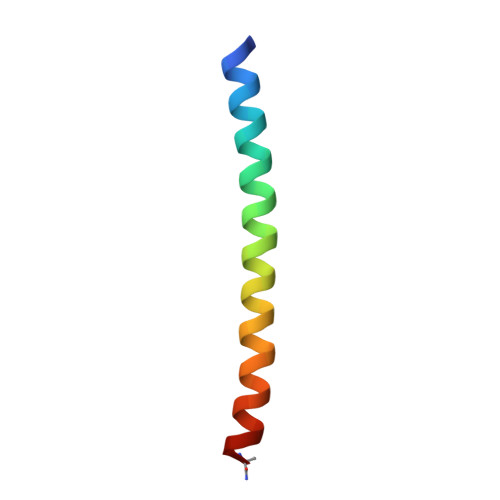The trimer-of-hairpins motif in membrane fusion: Visna virus.
Malashkevich, V.N., Singh, M., Kim, P.S.(2001) Proc Natl Acad Sci U S A 98: 8502-8506
- PubMed: 11447278
- DOI: https://doi.org/10.1073/pnas.151254798
- Primary Citation of Related Structures:
1JEK - PubMed Abstract:
Structural studies of viral membrane fusion proteins suggest that a "trimer-of-hairpins" motif plays a critical role in the membrane fusion process of many enveloped viruses. In this motif, a coiled coil (formed by homotrimeric association of the N-terminal regions of the protein) is surrounded by three C-terminal regions that pack against the coiled coil in an oblique antiparallel manner. The resulting trimer-of-hairpins structure serves to bring the viral and cellular membranes together for fusion. learncoil-vmf, a computational program developed to recognize coiled coil-like regions that form the trimer-of-hairpins motif, predicts these regions in the membrane fusion protein of the Visna virus. Peptides corresponding to the computationally identified sequences were synthesized, and the soluble core of the Visna membrane fusion protein was reconstituted in solution. Its crystal structure at 1.5-A resolution demonstrates that a trimer-of-hairpins structure is formed. Remarkably, despite less than 23% sequence identity, the ectodomains in Visna and HIV-1 envelope glycoproteins show detailed structural conservation, especially within the area of a hydrophobic pocket in the central coiled coil currently being targeted for the development of new anti-HIV drugs.
Organizational Affiliation:
Howard Hughes Medical Institute, Whitehead Institute for Biomedical Research, Department of Biology, Massachusetts Institute of Technology, 9 Cambridge Center, Cambridge, MA 02142-1401, USA.















